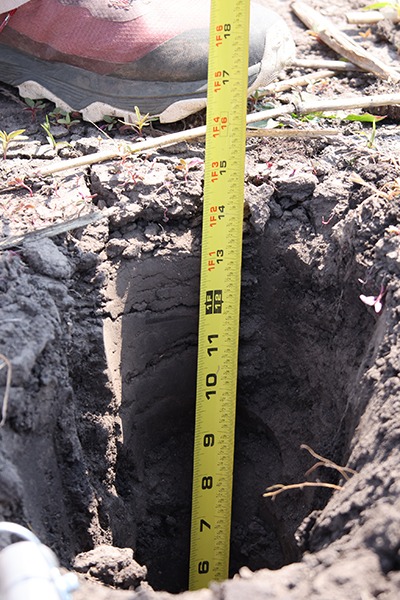Where Do Greenhouse Gases Come from on Dairy Farms?
The short answer: The single most important source of greenhouse gases (GHG) on dairy farms is enteric methane (CH4). The second most important source of GHG is CH4 and nitrous oxide (N2O) released from stored manure. The third most important source of GHG is the N2O and carbon dioxide (CO2) released from the production of animal feed, most of which are related to soil and crop management. The remaining portion includes the emissions that occur during the production of electricity, fuel, fertilizer, and other resources used on the farm.
Break it down: National average of milk carbon footprint (MCFP) is 1.04 kg of CO2-eq per kg of milk produced, where the footprint is determined as: (kg CO2 x 1 + kg CH4 x 25 + kg N2O x 298)/ kg milk. We can break down the MCFP into four major contributors listed from most to least GHG emissions: Enteric methane, manure, production of animal feed, and production of resources used on the farm.
- Enteric Methane (~40-50% of MCFP)
- Enteric CH4, is produced by the fermentation of feed in the rumen of dairy cows and released to the atmosphere primarily through the animal’s breath.
- The more a cow eats, the more CH4 she releases, but the more milk she also produces.
- There are more tools in the farmer’s toolbox to increase milk production than to reduce enteric methane and thus farmers are encouraged to increase milk production per cow to reduce CH4 emission per unit of milk produced (i.e., emission intensity).
- Manure GHG (~25% of MCFP)
- Generally, there are two to three times more CO2-eq in the form of CH4 than N2O.
- The two main factors affecting emissions are: the solid content of the manure (liquid manure emits more than solid manure) and the duration of storage.
- Conditions that tend to reduce CH4 (for example absence of oxygen) tend to increase the formation of N2O, and vice versa.
- For a guide to reducing greenhouse gas emission from manure storage on the farm, check out this Decode 6 article.
- Production of Animal Feed (~19-25% of MCFP)
- Soil type, fertilizer and manure management, and local weather conditions are key factors that influence N2O release from feed crops.
- Cropping systems and rotations that are more diverse and more perennial (including cover crops) tend to reduce the loss of CO2 from the soil in part by favoring soil carbon sequestration. Read more about feed production and greenhouse gas emissions in this article from Decode 6.
- Production of resources used on the farm (~20% of MCFP)
- These are the emissions associated with the production of electricity, fuel, fertilizer, etc. used.
- This is also an important part of the farm’s overall carbon footprint.
Back it up: Three relevant studies on this topic are those of Thoma et al. (2013), Rotz et al. (2021), and Aguirre-Villegas et al. (2022). Notably only the last study included potential soil carbon sequestration within the boundaries of the life cycle assessment.
The big picture: In the United States, the GHG emission from dairy farms contribute 99 Tg of CO2-eq or approximately 1.5% of national GHG emissions. In determining MCFP, the combination of multiple farm management practices was more important than regions of the country (e.g., dry and warm vs. wet and cold) or production systems (conventional, pasture-based, organic dairy).
In practice: The GHG emission intensity of dairy farms is not highly sensitive to any single source.
- Factors that tend to reduce MCFP include being in a colder region of the country, using manure anaerobic digestion (larger farms), limiting long-term manure storage, adopting grazing practices (smaller farms), and producing forage using more complex and perennial cropping systems.
- Factors that tend to increase MCFP include being in a warmer region of the country, producing less milk per cow, using large and long-term manure storage units for cows kept in confinement (i.e., indoors), and using more annual forage crop production systems.
Dig deeper: This is simply an overview of the sources of GHG emissions on the dairy farm. Learn more about detailed principles to reduce dairy farm GHG emissions in this article, “Basic Principles for Reducing Greenhouse Gas Emissions on a Dairy Farm.”
Editor’s note: Overall emissions for dairy farms can be thought of in two ways. The first is the one listed here, as a factor of the “milk carbon footprint” that quantifies the amount of carbon dioxide equivalent per gallon produced. It’s the “fraction of emissions attributed to milk production,” with about 87% of whole farm emissions included in that number for the average US dairy farm. Whole-farm emissions are often referred to as “farm-gate” or “cradle-to-farm-gate” emissions. This difference is why you’ll notice slightly different percentages of GHG emissions when talking about MCFP or farm-gate/whole farm emissions.
Photo by Austin Santaniello/Unsplash.








